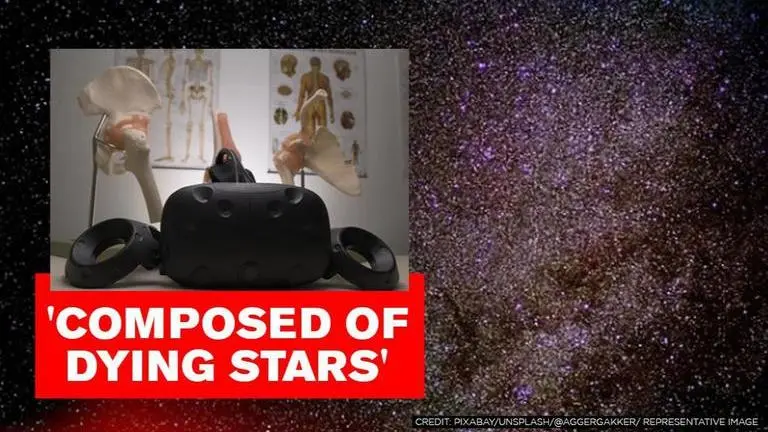Updated 7 August 2020 at 18:15 IST
Calcium in human bones and teeth comes from 'last gasp of dying stars': Study
Astrophysicists Amanda Morris and Tim Stephens observed “last gasp of dying stars” with x-ray imaging the first time, found explosion with calcium emissions.
- Science News
- 3 min read

Scientists at North-western and UCSC University found that most calcium in the universe, including the human bones and teeth, was composed of “calcium-rich supernova.” In new research published in The Astrophysical Journal on August 5, 2020, astrophysicists Amanda Morris and Tim Stephens observed the “last gasp of dying stars” with x-ray imaging for the first time and found that the rare stellar explosions mechanism produced the calcium found in most life-forms on Earth. Further, the astrophysicists studied the phenomenon by which the ultra-rare, calcium-rich supernovae ended their lives.
We are so proud of UCSB graduate student Daichi Hiramatsu and his advisor LCO scientist @d_a_howell for their participation in this unprecedented study of a calcium-rich supernova:https://t.co/XgT37NYtYN pic.twitter.com/zelCi8EkJR
— Las Cumbres Obsv (@LCO_Global) August 6, 2020
“For the first time ever, the researchers examined a calcium-rich supernova with X-ray imaging, which provided an unprecedented glimpse into the star during the last month of its life and ultimate explosion,” the paper revealed. In new findings, the astrophysicists observed that the calcium-rich supernova is a compact star that sheds a gaseous outer layer in the final stages of its existence. Therefore, its matter collided with loose material in that outer shell, emitting bright X-rays. Due to the hot temperatures and high pressure caused by the explosion, a rare chemical reaction produced calcium, the researchers explained.
These events are so few in number that we have never known what produced calcium-rich supernova, said Wynn Jacobson-Galan, a first-year Northwestern graduate student who led the study.
By observing what this star did in its final month before it reached its critical, tumultuous end, we peered into a place previously unexplored, opening new avenues of study within transient science, he added.
Northwestern's Raffaella Margutti, a senior author of the study explained that prior to these findings, scientists had indirect information about what calcium-rich supernovae might or might not be. However now, the scientific community gets to confidently rule out several possibilities. According to the study, Amateur astronomer Joel Shepherd first spotted the bright burst, dubbed SN2019ehk in Seattle on April 28, 2019, with telescope used to view Messier 100 (M100), a spiral galaxy located at 55 million light-years.
[Hubble Space Telescope image of SN 2019ehk in its spiral host galaxy Messier 100. The red arrow points to the supernova. Image credit: Charlie Kilpatrick, UCSC]
Advertisement
[An artist’s interpretation of the calcium-rich supernova 2019ehk. Shown in orange is the calcium-rich material created in the explosion. Purple coloring represents the gas shed by the star before the explosion. Image Credit: Northwestern University]
Advertisement
The Discovery of a potential supernova in M100 led to a global collaboration which included NASA's Swift Satellite, W.M. Keck Observatory in Hawaii, and Lick Observatory in California. However, the University of California Santa Barbara researcher Daichi Hiramatsu was the first to direct SWIFT to study SN2019ehk in the X-ray and ultraviolet. In subsequent research, astrophysicists observed the later 10 hours of the supernova explosion and noticed the strange appearance of X-Rays with Calcium emissions, according to the study.
Hubble examined supernova "before explosion"
The northwestern team discovered that SN 2019ehk emitted calcium using Keck. “The explosion was trying to cool down,” Margutti explained, “emitting calcium”. "It wasn't just calcium-rich," Margutti said. "It was the richest of the rich." Although the Hubble Space Telescope had been observing M100 for the past 25 years, Hubble images only examined supernova before the explosion, scientists noted in the research.
Published By : Zaini Majeed
Published On: 7 August 2020 at 18:16 IST


